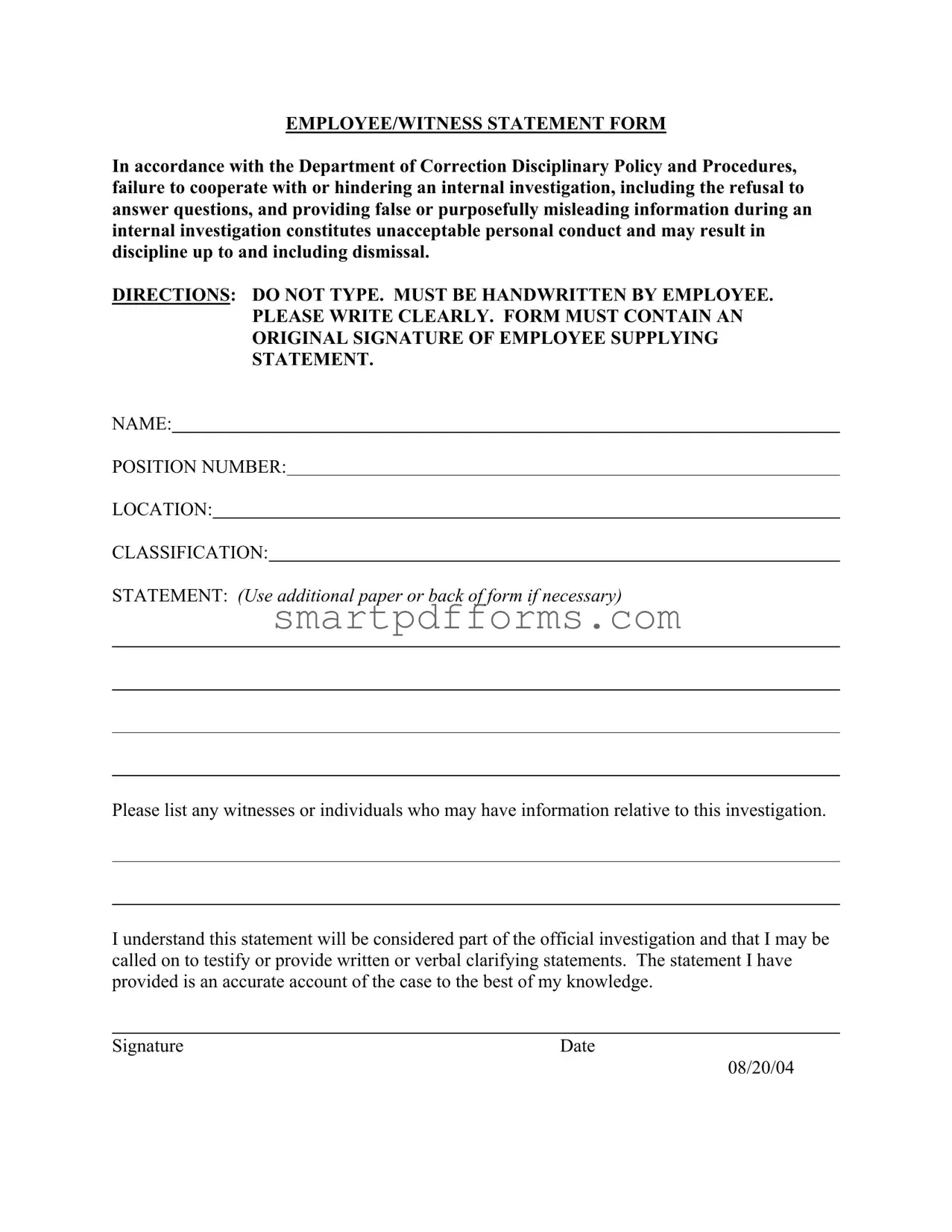Blank Employee Statement PDF Template
The Employee Statement form is a critical document used during internal investigations within organizations, particularly here within the Department of Correction. It's designed to collect firsthand accounts from employees or witnesses about incidents under investigation, emphasizing the importance of truthfulness and the potential consequences for non-cooperation or misleading information. For those involved in or witnessing an event subject to an investigation, completing this form truthfully is not just a procedural step; it's a crucial part of ensuring integrity within the workplace.
If you need to fill out an Employee Statement form, ensure your account is clear, honest, and comprehensive. Click the button below to get started.
Make This Document Now

